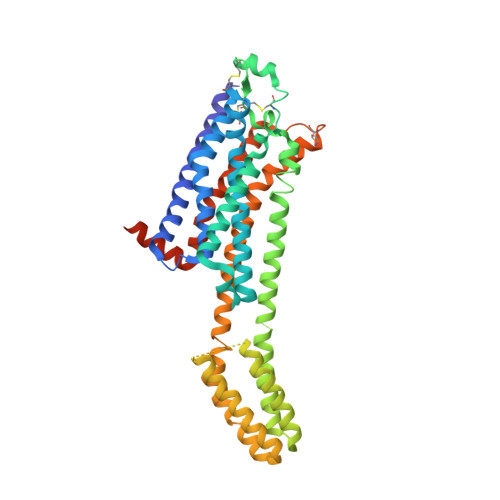A versatile approach to high-density microcrystals in lipidic cubic phase for room-temperature serial crystallography.
Birch, J., Kwan, T.O.C., Judge, P.J., Axford, D., Aller, P., Butryn, A., Reis, R.I., Bada Juarez, J.F., Vinals, J., Owen, R.L., Nango, E., Tanaka, R., Tono, K., Joti, Y., Tanaka, T., Owada, S., Sugahara, M., Iwata, S., Orville, A.M., Watts, A., Moraes, I.(2023) J Appl Crystallogr 56: 1361-1370
- PubMed: 37791355
- DOI: https://doi.org/10.1107/S1600576723006428
- Primary Citation of Related Structures:
7ZY3, 8A2O, 8A2P - PubMed Abstract:
Serial crystallography has emerged as an important tool for structural studies of integral membrane proteins. The ability to collect data from micrometre-sized weakly diffracting crystals at room temperature with minimal radiation damage has opened many new opportunities in time-resolved studies and drug discovery. However, the production of integral membrane protein microcrystals in lipidic cubic phase at the desired crystal density and quantity is challenging. This paper introduces VIALS (versatile approach to high-density microcrystals in lipidic cubic phase for serial crystallography), a simple, fast and efficient method for preparing hundreds of microlitres of high-density microcrystals suitable for serial X-ray diffraction experiments at both synchrotron and free-electron laser sources. The method is also of great benefit for rational structure-based drug design as it facilitates in situ crystal soaking and rapid determination of many co-crystal structures. Using the VIALS approach, room-temperature structures are reported of (i) the archaerhodopsin-3 protein in its dark-adapted state and 110?ns photocycle intermediate, determined to 2.2 and 1.7??, respectively, and (ii) the human A 2A adenosine receptor in complex with two different ligands determined to a resolution of 3.5??.
Organizational Affiliation:
Membrane Protein Laboratory, Diamond Light Source, Harwell Science and Innovation Campus, Didcot, Oxfordshire OX11 0DE, United Kingdom.





















